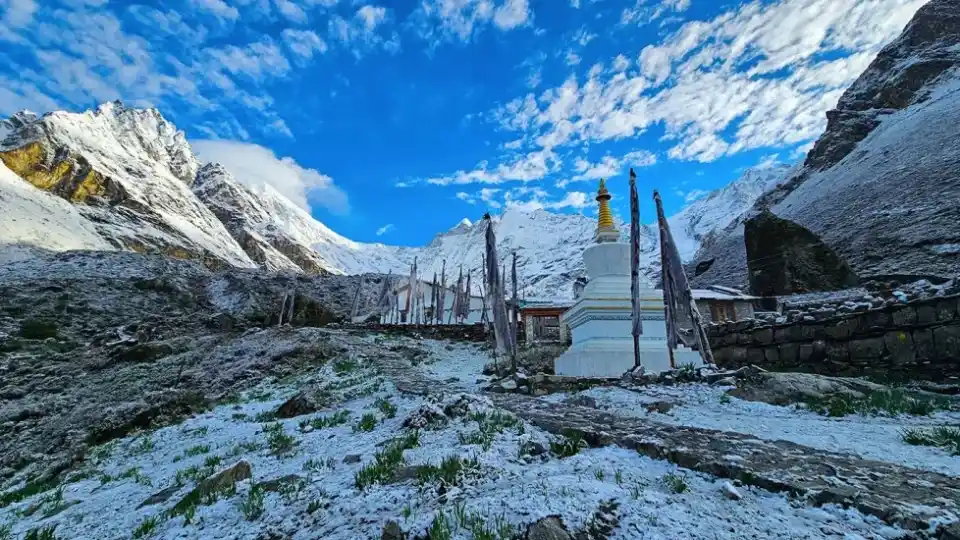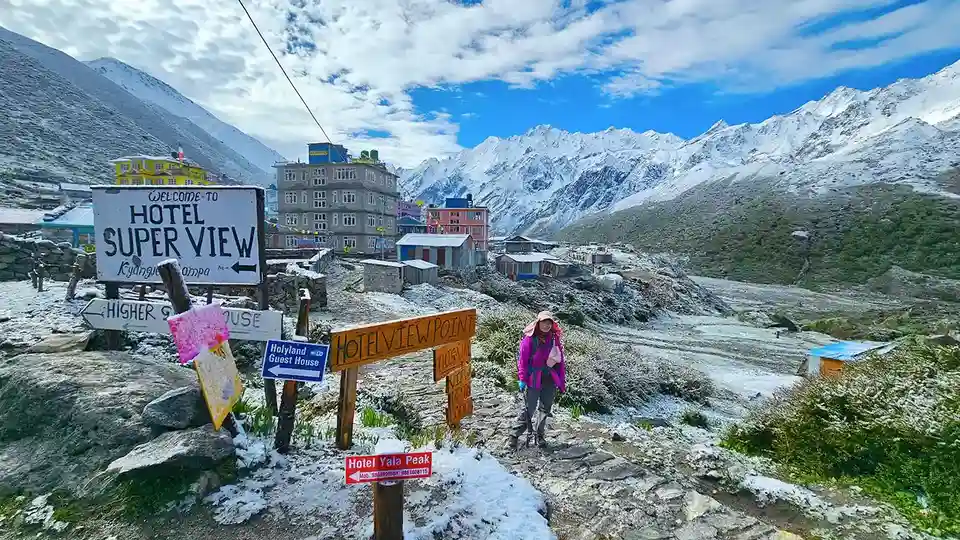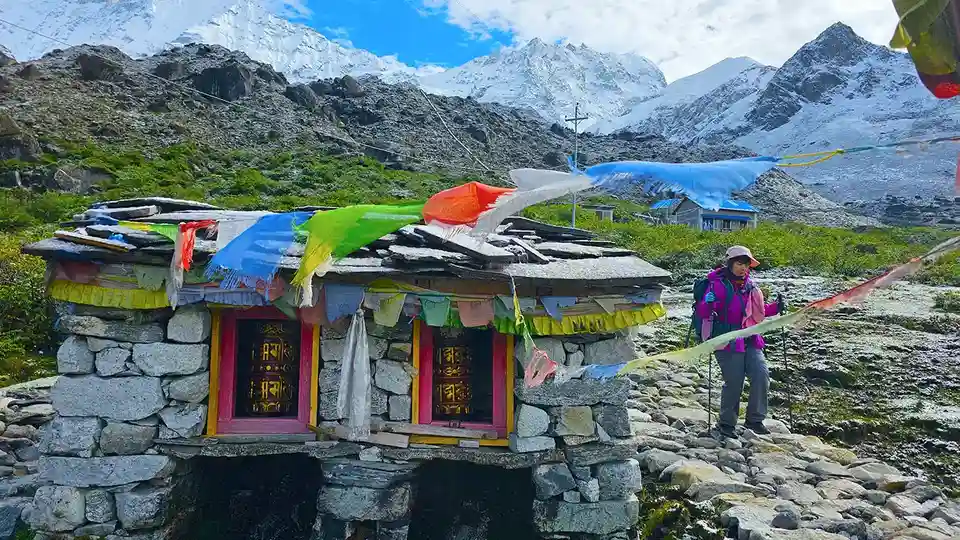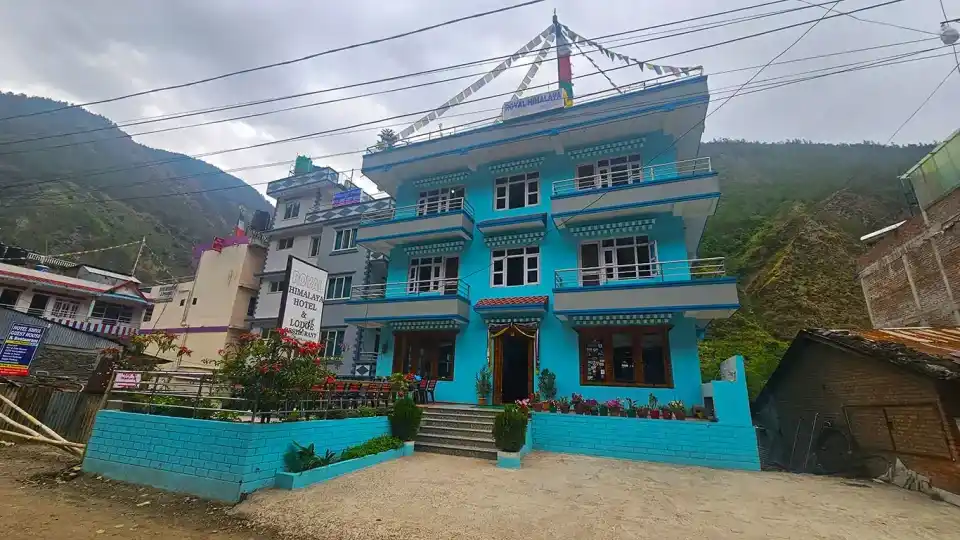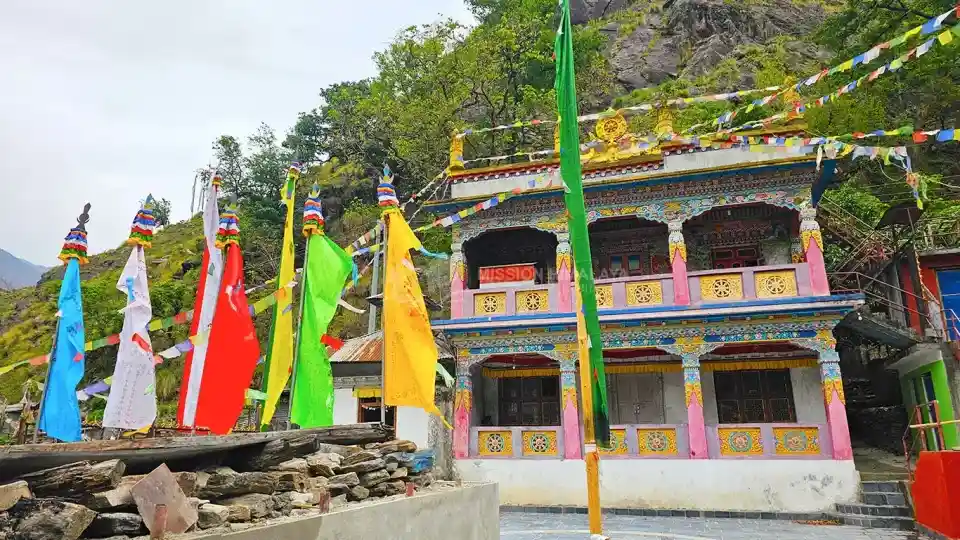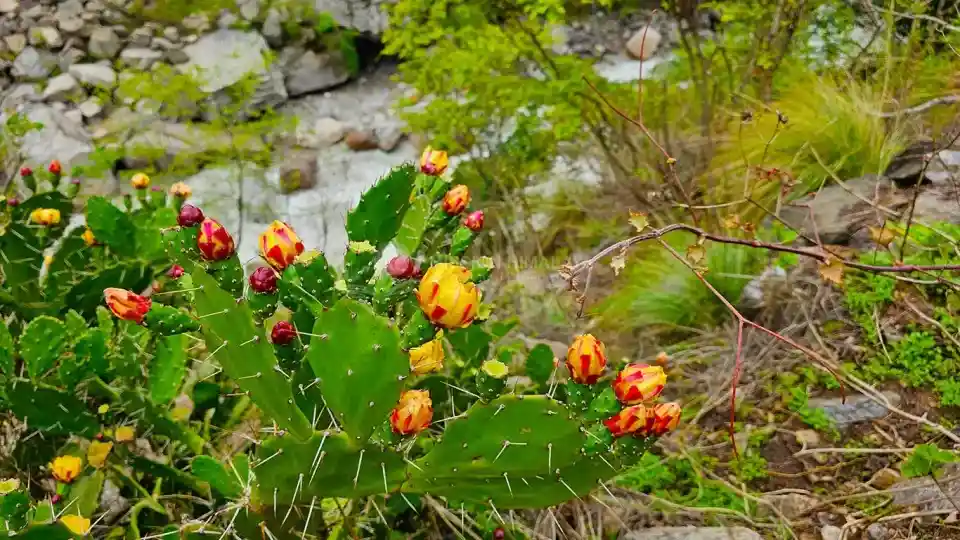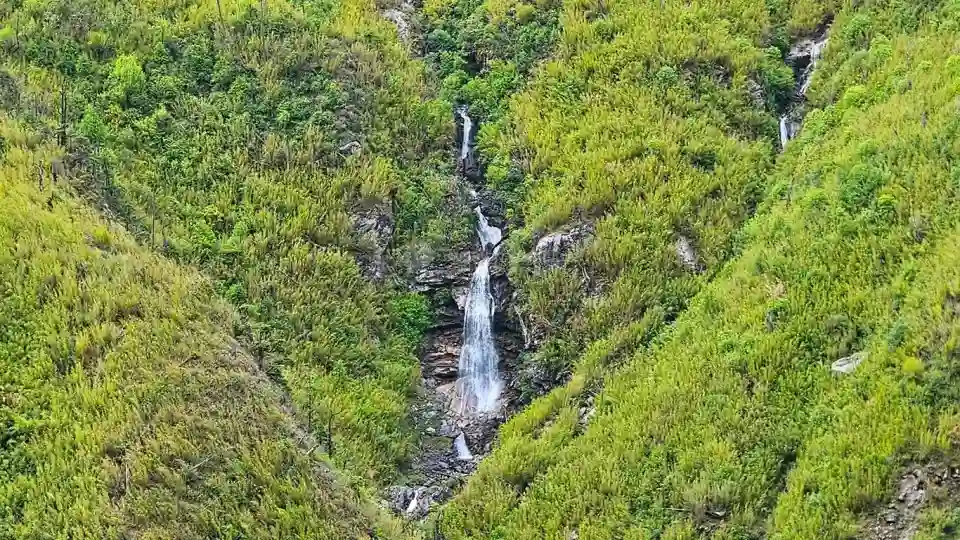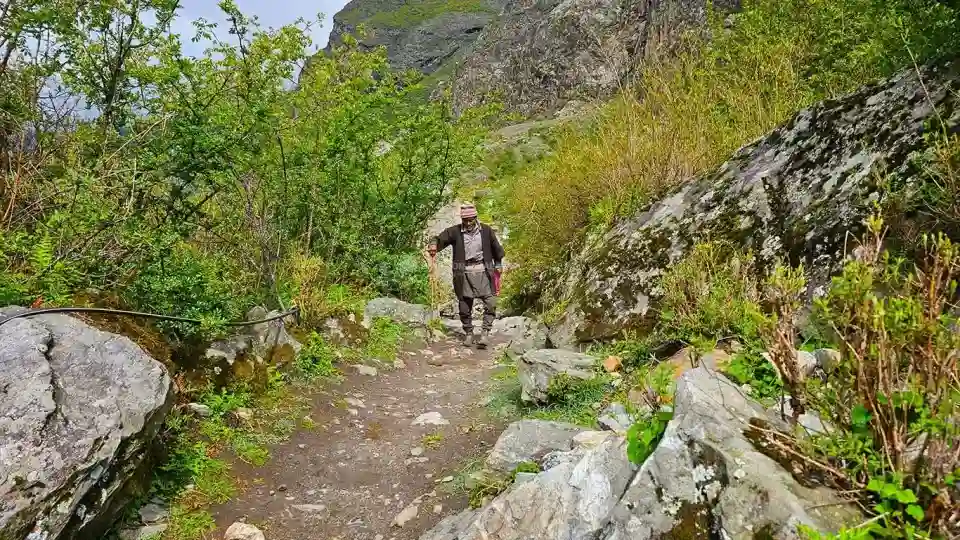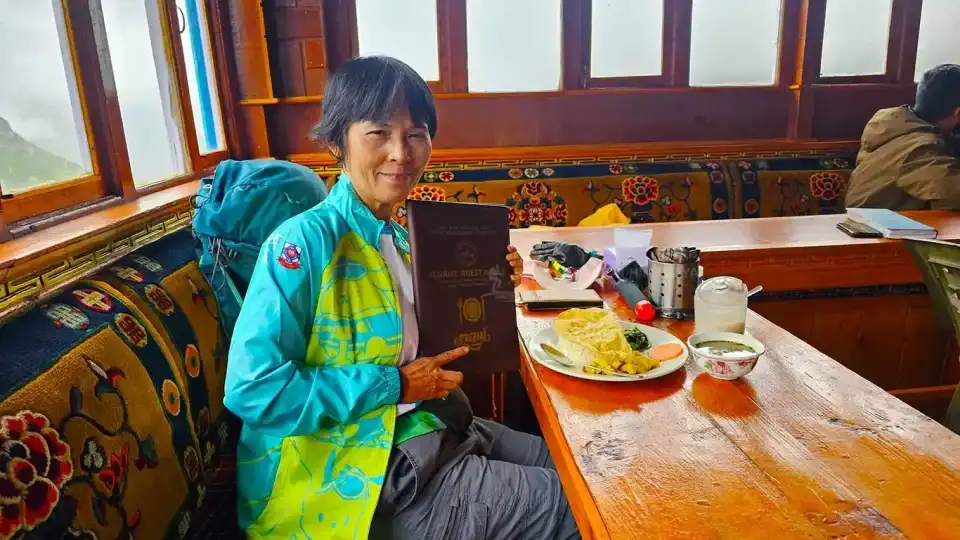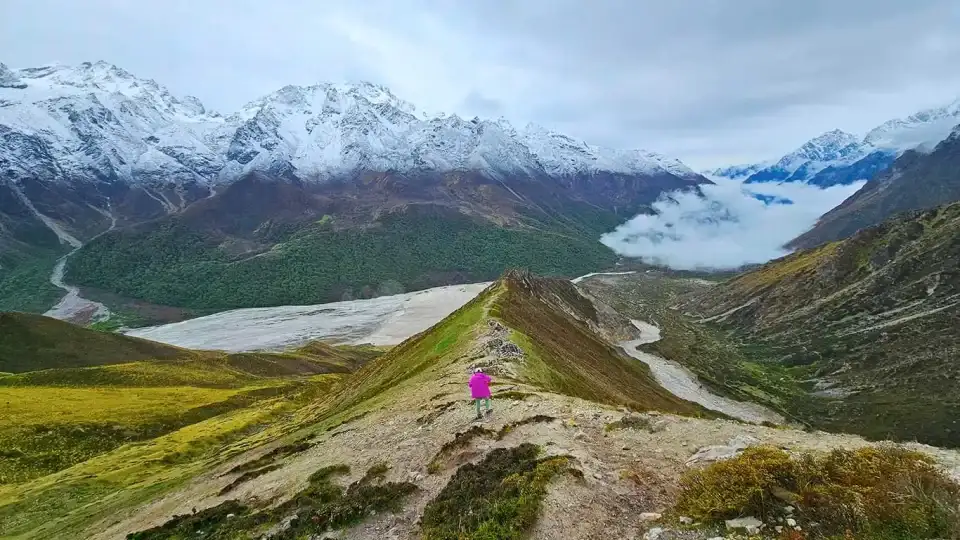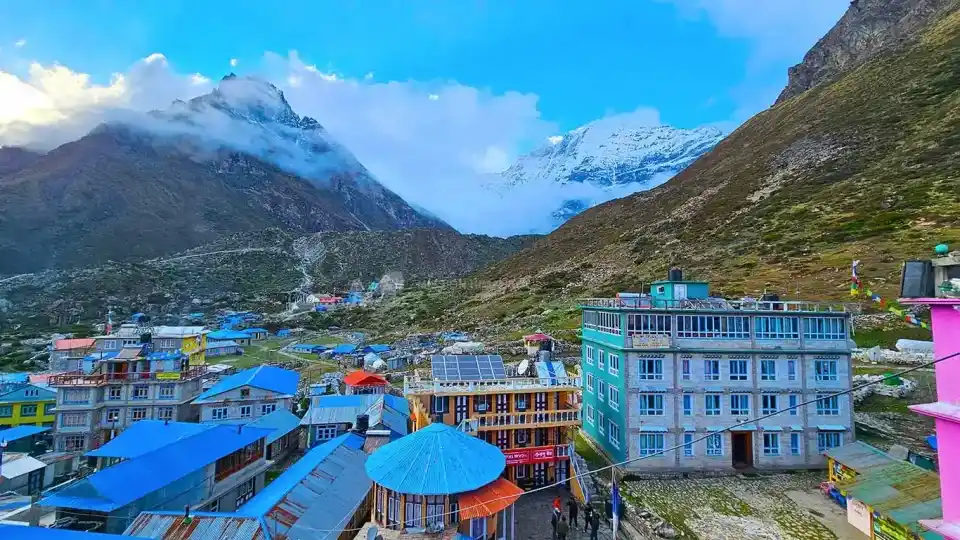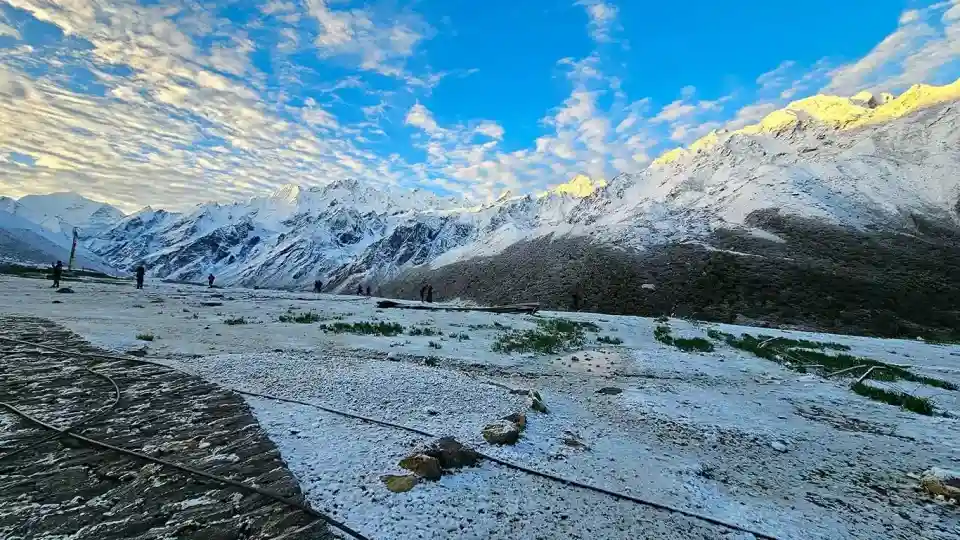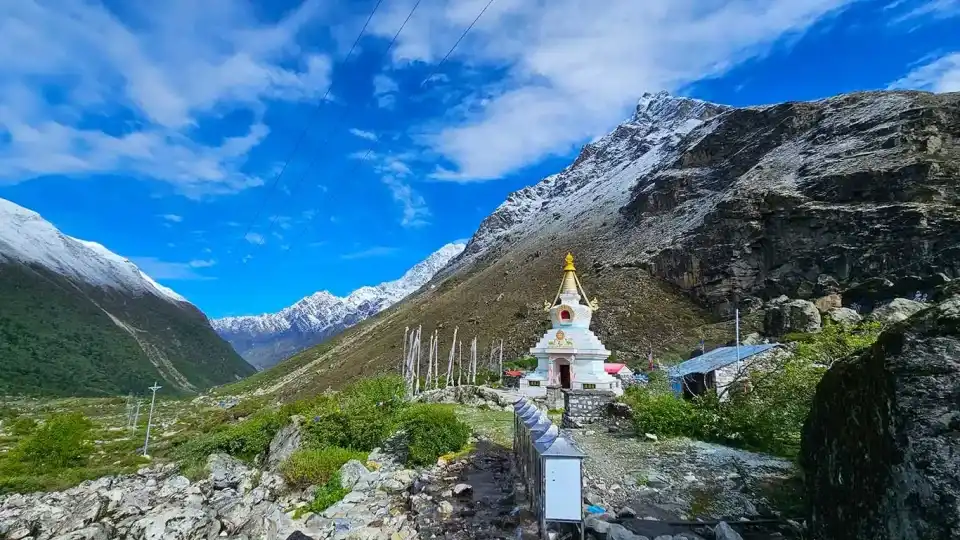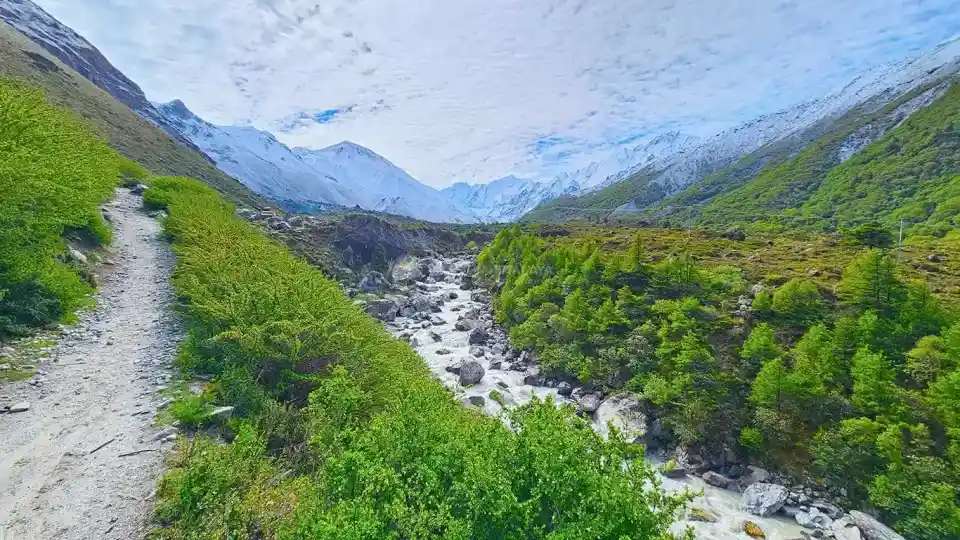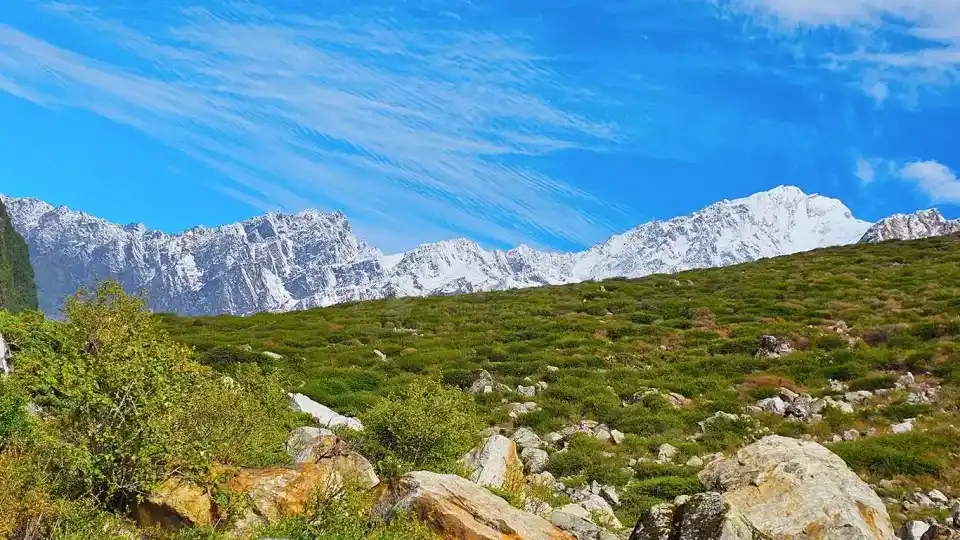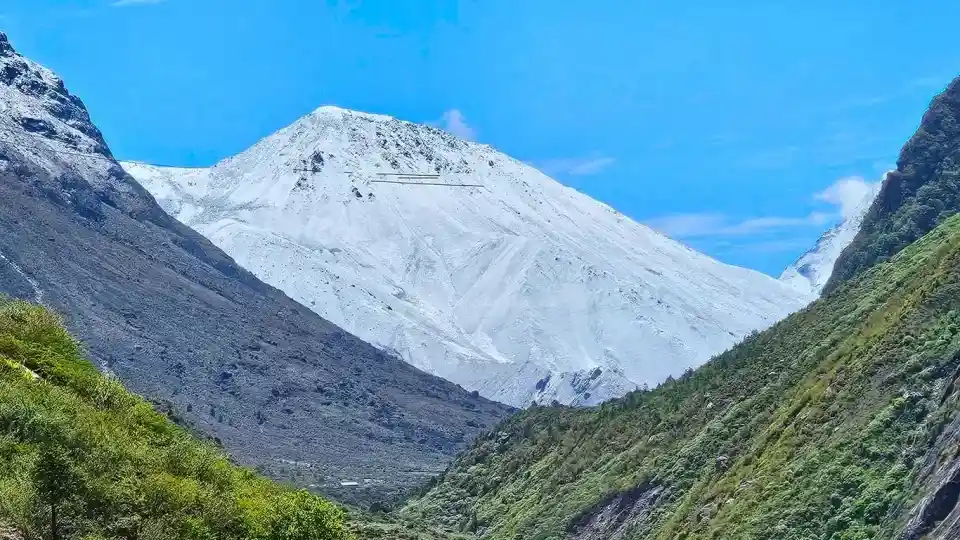|
Trip Duration
8 Days |
|
|
Region
Langtang Treks |
|
|
Country
Nepal |
|
|
Group Size
1 To 15 Person |
|
|
Arrival On
Kathmandu |
|
|
Departure From
Kathmandu |
|
|
Best Season
Spring and Autumn |
|
|
Max Altitude
5000M |
|
|
| Trip Grade Moderate |
|
Activities
Nepal Trekking
|
Langtang Valley Trek Overview
While there are plenty of places to visit in Nepal, we want to tell you that only a few of them will provide you with a truly fulfilling adventure experience in a short amount of time. Among those few, we have to say that the Langtang Valley trek is one of them. As this destination is near and dear to the capital city, Kathmandu, it has been able to gather the attention and interests of both international and local tourists. Due to its exceptionally beautiful scenes and landscapes, there is no doubt that this trek gets high appreciation from all the trekkers.
To be specific, this journey will be highly enjoyed by those who want to explore the rough and off-the-beaten path that goes through the mesmerizing forest routes, finally leading to the beautiful mountains. Especially, we highly recommend this trek for those who are coming to this country for the first time.
Introduction
Known as the “Valley of Glaciers,” the Langtang Valley is a fantastic place that features tall snow-capped peaks, lush alpine meadows, and thick rhododendron woods. This trek is more than simply a physical adventure; it’s an adventure through the magnificent Langtang National Park, where rivers sparkle, waterfalls plummet, and the aroma of Himalayan flora penetrates the air.
You will learn more about the ancient Tamang and Tibetan villages’ rich cultural artwork as you continue on the path. While visiting these villages, you will find that each village is a unique chapter, which reveals the customs, traditions, and warm hospitality of the locals. From ancient monasteries echoing with spirituality to the vibrant celebrations of traditional festivals, Langtang Valley undoubtedly has a dynamic display of Himalayan culture.
Wildlife enthusiasts can also try to glimpse the elusive red panda, the Himalayan tahr, and a variety of bird species by trekking the special trail in Langtang National Park. In addition to being physically tiring, the trek strengthens one’s bond with the natural environment and incorporates wildlife observation into the experience.
Meanwhile, these are the additional features of the trek: specifically, you have to be prepared yourself to be mesmerized by the panoramic views that will greet you at every turn. As guardians, peaks such as Langtang Lirung, Ganesh Himal, and Dorje Lakpa spread their shadows across the wild terrain of the Langtang region. Along with this beautiful background, the trek offers the opportunity to see the breathtaking panorama from Kyanjin Ri, which changes the Himalayan landscape into ever-changing colors.
Therefore, the trek goes over 8 days, covering 65-75 kilometers within 6 days. While adventuring throughout these days, you will be guided through picturesque villages such as Langtang and Kyanjin Gompa. Passing through these trails will offer you a balanced challenge, with gradual ascents and descents that serve well for both experienced trekkers and those seeking a thrilling introduction to the Himalayan trails. So, as we have introduced our trek, it’s time to dive deep into the further specifics of the trek. So without wasting any time, let’s get started-
Trip Highlights:
- See the beautiful Langtang Valley, a picturesque Tibetan-influenced village.
- Immerse yourself in the culture by staying in homestays, offering an authentic experience with Tamang and Sherpa families.
- Keep an eye out for diverse flora and fauna in Langtang National Park, including red pandas, Himalayan tahr, and various bird species.
- Encounter Buddhist stupas and prayer flags, adding a spiritual and visual dimension to the trek.
- Ascend to Tserko Ri or Kyanjing Ri for the Amazing views of the nearby mountains.
- Explore the local cheese factory in the village.
- Peaceful trails throughout the route.
- Spend the night in the local teahouses interacting with amazing locals.
Is the Langtang Valley trek really difficult?
The difficulty of the Langtang Valley Trek can vary depending on individual fitness levels, experience in trekking, and the specific route taken. Generally, the Langtang Valley Trek is considered to be of moderate difficulty, making it accessible to a wide range of trekkers, including those with some trekking experience and even to people with no experience at all.
The trek takes you through a variety of landscapes, including lush forests, terraced fields, and high-altitude alpine meadows. While it doesn’t involve technical climbing, there are steep ascents and descents, and the altitude can be a factor of difficulty for some people. Remember that the highest point on this Langtang Valley Trek is Kyanjin Ri (4,773 meters or 15,655 feet), which is considered a high-altitude spot. From here, you can capture the stunning panoramic views of the surrounding peaks.
From where does the trek to Langtang Valley begin?
The trek to Langtang Valley typically begins in Syabrubesi, which is a scenic village located in the Rasuwa District of Nepal. Syabrubesi serves as the starting point for the Langtang Valley trek and is accessible by road from Kathmandu. Trekkers often take a bus or private transport from Kathmandu to Syabrubesi, and from there, they commence their trek towards the Langtang Valley. Therefore, in the same way, we will be taking a drive to Syabrubesi from Kathmandu. The trail passes through picturesque landscapes, charming villages, and diverse terrain as it gradually ascends toward the heart of the Langtang region.
Is Langtang Valley worth it?
Langtang Valley is worth a visit for those seeking a breathtaking blend of natural beauty and cultural richness. It offers a combination of stunning natural beauty, diverse landscapes, and rich cultural experiences. The panoramic views of snow-capped Himalayan peaks, interactions with local communities, and the trek’s varied terrain make it a rewarding adventure.
Additionally, Langtang Valley is less crowded than some other trekking destinations in Nepal. So, surely, it provides a more intimate and authentic experience. Therefore, we ensure that whether you’re a nature enthusiast, cultural explorer, or adventure seeker, the Langtang Valley trek will offer you a well-rounded and memorable journey.
When should you do the Langtang Valley trek for the best experience?
For the most rewarding experience, doing the Langtang Valley trek is highly recommended during the spring (March to May) and autumn (September to November) seasons.
Spring (March to May)
This season brings a delightful transformation to the Langtang Valley. The trail appears alive and well with rhododendron blossoms in bloom, which create a vibrant mosaic against a background of rich greenery of the region. Also, the weather remains mild and stable, with daytime temperatures ranging from 10 to 20 degrees Celsius (50 to 68 degrees Fahrenheit). Furthermore, in this season, clear skies will also provide crystal-clear views of the snow-capped peaks, making it an optimal time for trekkers who appreciate both vibrant landscapes and panoramic mountain vistas.
Autumn (September to November)
As the monsoon retreats, autumn shows a period of stable and dry weather. Like in the spring, the skies are clear in the autumn, offering unparalleled visibility of the Himalayan range. Particularly in this season, the daytime temperatures in this season hover between 10 to 15 degrees Celsius (50 to 59 degrees Fahrenheit) in higher altitudes. Further, the trekking trails are at their busiest during this season as they provide an ideal combination of pleasant weather and breathtaking scenery.
If we talk about the monsoon, then we advise you to avoid the monsoon season (June to August) due to heavy rainfall. Heavy rainfall in this season can lead to muddy and slippery trails, landslides, and limited visibility. Furthermore, winter (December to February) brings colder temperatures and occasional snowfall. So it makes the trek more challenging and requires proper cold-weather gear. Therefore, choosing the right season ensures that trekkers can fully enjoy the natural beauty and cultural richness of the Langtang Valley.
Langtang Valley Trek Itinerary
Day 1: Kathmandu to Syabrubesi
Walking Hours: 8 Hours Driving
Meals Included: Breakfast, Lunch And Dinner
Accommodation: Tea House/ Lodge
On this first day of the trek, we leave bustling Kathmandu early in the morning and move to the starting point of our trek – Syabrubesi.
On this trip, you will enjoy seven hours of scenic driving along the Trishuli highway, driving through beautiful small villages, river valleys, and mountains. After passing the entrance gate to the Langtang National Park, the road then changes to offroad. We will arrive at the Syabrubesi village crossing the Dhunche headquarters of the Rasuwa. After journeying for about 7 hours, and then we will rest and prepare for tomorrow’s trek.
Day 2: Trek to Lama Hotel
Walking Hours: 5 To 6 Hour Trekking
Meals Included: Breakfast, Lunch And Dinner
Accommodation: Tea House/ Lodge
Our journey today will begin with a slight three-hour ascent through a subtropical, deciduous, slightly higher-than pine and rhododendron forest upstream to the village of Bambus, where we will stop for lunch. If we’re lucky, we may come across Langur monkeys along the way. From here we will again climb steeply through the bamboo forest to our destination the Lama Hotel. Overnight at the Lama Hotel.
Day 3: Lama Hotel to Langtang Village
Walking Hours: 6 Hour Trekking
Meals Included: Breakfast, Lunch And Dinner
Accommodation: Tea House/ Lodge
After having breakfast here at lama hotel, we will have a slight ascent through rhododendrons and pine forests upstream taking us around small villages, to the village of Ghoda Tabela, where we stop for lunch.
Then the landscape turns into a U-shaped glacial valley here. After lunch, we will continue along a scenic trail that includes a tree line and the magical views of the Langtang Lirung Peak. After passing through these, the route will then take us to the Langtang Valley. The Tibetan-style village of Langtang was destroyed by a massive catastrophe caused by an earthquake in April 2015. Overnight at the Langtang Village.
Day 4: Langtang Village to Kyanjin Gompa
Walking Hours: 7 Hours Trek
Meals Included: Breakfast, Lunch And Dinner
Accommodation: Tea House/ Lodge
Today will be a less demanding trek and at a calmer pace. Especially through the picturesque villages and herds of yaks, we reach the Kyangjin Gomba. If the weather permits us, we will have wonderful views of Ganchempo Mountain and Langtang Lirung. We will have time to relax, walk to the glacier, or visit the Yak cheese Factory, Kyanjin Monastery, or local houses. This will be the highest point of the trek so you will have plenty of opportunities to witness the scenery nearby. Overnight at the lodge in Kyanjing Gompa.
Day 5: Kyanjin Gompa
Walking Hours: 5 To 6 Hour Trekking
Meals Included: Breakfast, Lunch And Dinner
Accommodation: Tea House/ Lodge
Today we have to climb the ridge of the mountain Kyanjin Ri 4300 m. After climbing the summit, we will witness the amazing view of the Langtang Mountains, including Langtang Lirung (7227 m), and Dorje Lhakpa (6966 m). Along with these peaks, you will also be able to see the beautiful Langsisa Ri Mountain (6560 m), Ganjala Peak, Yala Peak, and many other peaks.
If possible, we will continue to the top of Tsherko Ri 4986 m, where you will get an even better view of the Langtang Mountains, from which you will have a 360-degree view of the surrounding mountains and the top of Mount Yala. After climbing to any of these points, you will descend to Kyanjin Gompa and rest. Furthermore, while climbing to the top is voluntary, you can also spend the day walking with amazing views around Kyanjin Gompa and enjoying the snow-capped mountains and the warm sun. Overnight again in Kyanjing Gompa.
Day 6: Descend Lama Hotel
Walking Hours: 5 To 6 Hour Trekking
Meals Included: Breakfast, Lunch And Dinner
Accommodation: Tea House/ Lodge
On this sixth day of the trek, we will return to the Lama Hotel. After breakfast, we will descend from Kyanjin Gompa through the Langtang Valley to Ghoda Tabela, where we will have lunch. From here, we will have another two hours of descent through the Langtang Khola River valley to the Lama Hotel. Along the way, the view of the 7,000-meter Langtang Mountain will accompany us. Overnight at the Lama Hotel.
Trek extension – Gosaikunda Lake. The trek continues through Thulo Shyaphru and will take you to the sacred lakes of Gosaikunda. If you choose to do the Gosaikunda Lake trek, the trek will be extended for about 7 days. We recommend extending the route, especially in spring, when you will be attracted by birds and flowers, blooming rhododendrons with a lush and green landscape.
Day 7: Syabrubesi
Walking Hours: 7 Hours Trek
Meals Included: Breakfast, Lunch And Dinner
Accommodation: Tea House/ Lodge
Today is the last day of our journey together. Half an hour after leaving the Lama Hotel, we will disconnect from the village of Rimche and head up the beautiful rhododendron forests to the typical Sherpa village of Syabrubesi. While descending, we will see snowy peaks in Tibet. Finally, after we descend to our destination Syabrubesi, we will celebrate our successful journey. Overnight at the lodge in Syabrubesi.
Langtang Valley Trek Cost
Quotation can be Different According to the Number of Days in Trekking, Your Country of residence, the Number of days in the City, Guide quality, equipment, flight company, hotel quality in the city, Transportation Type, Number of Trekkers in your group, Teahouses’ quality of Trekking, Meals included in Trekking, and Other Numerous included Items. For exact Cost, Please Message us on WhatsApp. +977-9841965533
-
Porter
One strong porter with pay for food, lodging, insurance, and transportation.
-
transportations
Pickups and drop-offs from airports and hotels.
-
Accommodations: Twin-share teahouses on the trek and a 3-star hotel stay while in Kathmandu.
-
Full-time meals along the trek and breakfast in Kathmandu.
-
Welcome and farewell dinners.
-
Down jacket, and a four-season sleeping bag (the down jacket and sleeping bag must be returned when the trip is over).
-
A comprehensive medical kit.
-
All necessary paperwork and permits.
-
All relevant fees, including taxes and service costs.
-
Private transportation in a welcoming car.
-
English-speaking, professionally qualified, and experienced guide giving pay, lodging, food, and insurance.
-
If your group consists of six or more people, an additional assistant trekking guide will be assigned.
-
Nepal Entry Visa Fees.
-
Other meals and beverages rather than compared to an itinerary.
-
International travel to and from Nepal.
-
Excess baggage charges.
-
Evening and lunch meals in Kathmandu.
-
Extra night(s) of lodging.
-
Travel Insurance.
-
Personal expenses (phone calls, laundry, bar bills, battery recharge, extra porters, bottle or boiled water, hot shower, heater charge, etc.).
-
Tips for guides and porters.
-
The services that are not included under “Cost Included”.
Trip Gear
Langtang Valley Trek Map
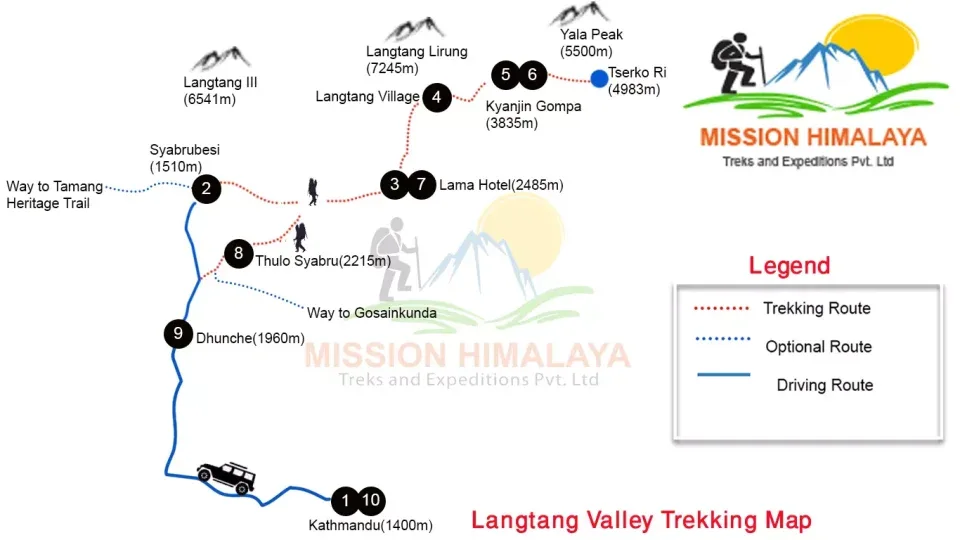
Langtang Valley Trek Related Information
How to prepare for the Langtang Valley trek?
Doing the Langtang Valley trek in Nepal promises an unforgettable journey through spectacular trails. However, the trek’s challenges, including varying altitudes and unpredictable weather, necessitate thorough preparation. So for that reason, in this section, we’ll explore essential steps to ensure a safe and enjoyable trek. From physical fitness training to obtaining permits, packing smartly, and understanding local customs, we will explore all of it. So, now let’s delve into the details of this trip so that you get fully excited for the adventure of a lifetime.
Physical Fitness Training
Initiate a fitness training routine well in advance. Focus on cardiovascular exercises, strength training, and endurance activities to prepare your body for the physical demands of trekking in varied terrains and altitudes.
Trekking Gear Checklist
Create a comprehensive checklist of necessary trekking gear. Ensure your equipment is in good condition, including well-fitted trekking boots, layered clothing suitable for diverse weather conditions, a comfortable backpack, and a cold-weather sleeping bag.
Permits and Documentation
Prepare all of the necessary documents required to obtain the required permits for the Langtang Valley trek. As we are gonna manage everything for you, make sure that you make photocopies of the documents and keep them in a secure place.
Health Check-up
Schedule a pre-trek health check-up with a healthcare professional. Discuss your travel plans, and ensure you are physically fit for high-altitude trekking. Obtain any necessary vaccinations and medications.
Travel Insurance
Secure comprehensive travel insurance that covers trekking activities at high altitudes. Confirm that the policy includes emergency evacuation coverage in case of unforeseen circumstances.
Pack Light
Opt for lightweight and compact gear to reduce the weight of your backpack. Prioritize essential items, and avoid unnecessary belongings. Pack smartly to ensure comfort during the trek.
Money and Currency
Carry enough local currency for expenses along the way, as there might be limited access to ATMs in remote areas. Inform your bank about your travel dates to prevent any issues with card transactions.
Language and Cultural Preparation
Learn basic Nepali phrases to facilitate communication with locals. Acquaint yourself with the local customs and cultural norms to show respect and understanding during your trek.
Emergency Contacts
Compile a list of emergency contacts, including the contact information of local authorities, your embassy, and someone back home. Share your itinerary with a trusted friend or family member.
Therefore, by diligently preparing for the Langtang Valley trek, you increase your chances of having a safe, enjoyable, and fulfilling trekking experience amidst the breathtaking landscapes of the Himalayas.
Accommodation Facilities in Langtang Valley Trek
The Langtang Valley trek offers a range of accommodation options, primarily in the form of teahouses or lodges along the trail. These facilities provide trekkers with essential amenities for a comfortable stay amidst the stunning Himalayan landscapes.
1. Teahouses/Lodges:
Teahouses are simple lodgings equipped with basic amenities. These establishments often have communal dining areas where trekkers can socialize, share stories, and enjoy warm meals. So, expect clean beds, blankets, and shared bathrooms with cold water on this trek.
2. Room Options:
Teahouses typically offer single and double rooms. Double rooms may have twin beds or a double bed, with shared or attached bathrooms. Every bed will include a pillow, mattress, and blankets, as these are necessities for a bedroom.
3. Common Areas:
Generally, teahouses often have common rooms with heating, providing a cozy space for trekkers to relax and relax. Outdoor spaces with panoramic views allow travelers to enjoy the natural beauty of the Langtang Valley.
4. Hot Showers and Charging Facilities:
While hot showers may not be available at all teahouses, some do offer them for an additional fee. Charging facilities for electronic devices are available in Syaprubesi and Langtang Valley. This allows trekkers to stay connected during the trek.
5. Blankets and Sleeping Bags:
Accommodation along the Langtang Valley trek provides a unique opportunity to experience the warmth of Nepali hospitality while immersing yourself in the natural beauty of the Himalayas. Trekkers are encouraged to be flexible and embrace the simplicity of teahouse living for a truly authentic trekking experience. Teahouses typically provide blankets, but it’s advisable to bring your sleeping bag for added warmth, especially at higher elevations.
Food and drinks in the Langtang Valley trek
Keep in mind that the food menu becomes simpler the more difficult it is to get to. Anywhere throughout the trek, tea houses have one thing in common: their menus are all identical, with dishes like Dal Bhat, noodles, potatoes, and soups. These products are available throughout the trek.
Breakfast:
- Tea or Coffee: Most teahouses and lodges will offer tea or coffee to kickstart your day.
- Porridge: A warm and hearty bowl of oat or rice porridge might be available, providing energy for the day ahead.
- Eggs: You may have egg options in the lower altitudes.
- Bread and Jam: Simple options like toast with jam or honey are common in the teahouses.
- Pancakes or Chapati: Mainly in the teahouses, you will find pancakes or chapati (flatbread).
Lunch:
- Dal Bhat: A traditional Nepali meal consisting of lentil soup (dal), rice, and side dishes like vegetables (radish curry), pickles, and meat in lower altitudes.
- Noodles: Many teahouses serve a variety of noodles.
- Soups: Warm soups, especially vegetable or noodle soup, are commonly available.
- Momos: These delicious Nepali dumplings, filled with vegetables, are a popular lunchtime snack.
Dinner:
- Rice and Curry: Similar to lunch, you might have rice with a variety of curries, including vegetables, chicken, or yak.
- Local Specialties: Teahouses often showcase local specialties, allowing you to try different regional dishes.
- Quinoa or Buckwheat: At higher altitudes, you might find alternatives to rice and wheat, such as quinoa or buckwheat.
- Hot Drinks: Wrap up your day with a warm beverage like herbal tea or coffee.
Remember that the availability of specific dishes can vary, and the altitude and remoteness of the trekking route may influence menus. Further, it is also crucial to stay hydrated, so make sure to drink plenty of water or other hydrating beverages such as tea, coffee, and hot lemon throughout the day. A few of your favorite snacks and energy bars are a great option to pack for your hike to provide you with extra energy and quick snacking.
Permits required for Langtang Valley Trek
To preserve the natural environment and cultural heritage, the Langtang Valley Trek in Nepal requires several permissions. Ensuring you comply with local legislation is also a formality. The primary permits that you’ll need are as follows:
- Langtang National Park Entry Permit: The entry permit for Langtang National Park is a requirement to access the park. This permit can be obtained in Kathmandu or at Syabru Besi’s park gate. Furthermore, this permit is valid for the whole length of your trek and contributes to the region’s conservation work.
- TIMS (Trekkers’ Information Management System) Card: Many treks in Nepal no longer require the TIMS card. In its place, more specialized national park permits are now required. But in the case of the Langtang Valley trek, it requires a TIMS Card.
You don’t need to stress about the procedure for obtaining these permits while engaging us. Still, to secure the required permits, you must give us the specifics and photocopies of the necessary documents. Therefore, know that these permits guarantee that you adhere to regional laws while also helping to protect the Langtang region’s natural and cultural assets.
Information on the medical facilities available along the Trek
There aren’t as many medical facilities here as in more developed locations. However, the following basic medical services and amenities are accessible throughout the trail:
- Local Health Posts and Clinics: Many of the villages along the route have small clinics or community health stations. These can give you both common medications and basic first aid. These clinics are usually run by medical professionals in the area.
- Emergency Services: If there are any problems and you need to arrange for an evacuation, we will aid you with the support of the locals and our staff. In more extreme situations, helicopter evacuations are an option, although they can be costly and weather-dependent.
- Kathmandu: If you have any issues, it is recommended that you see your doctor and have a comprehensive physical examination before starting the Langtang Valley Trek. If you want, you can use medical services in Kathmandu’s modern hospitals and medical institutions.
Conclusion
The Langtang region is a safe escape for those who love the outdoors, as well as a location to experience the friendliness and customs of the surrounding people. Further, we want to tell you that those who want to experience the surroundings of hills to mountains will find this journey a go-to journey. Later, on the trip with the soaring snowy peaks around you, you will find this journey to be more exciting and curious.
Along with overcoming difficult terrain, finishing this trek allows you to establish a spiritual connection with the Himalayas. We assure you that you will always cherish the memories and experiences you had on this journey. With us, you can rest assured, as we always offer our best to the clients we work with. Therefore, we would like to take this opportunity to offer you this amazing excursion through the Langtang region’s alpine adventure. Whether you are an experienced adventurer or planning your first adventure trip, never forget that we are here to assist you.
Langtang Valley Trek FAQ'S
Why not. Our itinerary tailor expert from Mission Himalayan Treks and Expedition will modify the itinerary. Please feel free to contact us if you’d like to personalize your Langtang Valley Trek schedule.
Buses and microbuses are available every morning in Machhapokhari, Kathmandu. It will be comfortable in buses rather than small microbus.
Without any doubt, you can proceed to explore the Langtang region. Since the region of Langtang is not a part of Nepal’s restricted area, most of the trekkers grasp this destination in their solo trekking spot. However, it will be better if you trek with a guide.
Finding the right track might be difficult, and you may become disoriented. The trails are extremely perplexing, with several paths leading through impenetrable woodlands. As a result, you must exercise extreme caution while taking a step to a new trail.
Allocate a budget up to USD $550 to $600 per individual. The prices for permits, public vehicle transportation tickets, and payment for hotels are included. However, you must pay an additional charge for a personal vehicle ride, charging electrons, wifi, hot shower, and hot drinking water.
Yes, you need to apply for two permits i.e Trekkers Information Management System (TIMS) and Langtang National Park entrance permit which can be applied from a trusted trekking company.
Due to the snowstorm and 2015’s earthquake, the Langtang village has been devastated, where 310 dead bodies were found and more than 100 are still missing.
You can get SIMs in Kathmandu so that you can get engaged with your loved one. In Addition, most of the hotels provide wifi facilities to the guest with extra charge.
Some of the prior trekkers have shared their experience as they got caught by altitude sickness. That’s why we recommend you to know about altitude symptoms and its quick prevention. Don’t neglect your health if you suffer from altitude sickness.
It is not compulsory to have travel insurance but you might get encountered by unforeseen incidents. Such as heavy snowstorm, landslides, diarrhea, altitude sickness, and many other physical weaknesses and natural disasters. So, it will be your profit if you obtain travel insurance.
There is no ATM facility in Langtang. You must carry the needed funds in cash before proceeding with this trek.
Langtang Valley Trek Reviews

Overall lots of services and information was provided by Mission Himalaya treks Birendra Duwadi. we needed a prompt response. So he replies to us as soon as possible. The services provided by Birendra and his staffs are so excellent and respective. Our Langtang valley trekking fully well organized.
TripAdvisor

My first to Nepal and 1st trip with Mission Himalaya Treks. My tour leaders are excellent. Booking with Birendra generally 3 months ago I did. I paid bank charges when transferring the payment in advance just 20%. Rest I paid him in Kathmandu. Langtang trek and Kathmandu day tour were excellent.
TripAdvisor

Fantastic journey if you traveling with Mission Himalaya and booking early that’s when you get the best deals on prices, Best Guides. I visit my wife Langtang valley in October. Best view.Perfect traveling.
TripAdvisor

Scorpio the vehicle we used was on time and very comfortable, had air-conditioned for each seat as well as a charging point in driver place. The driver was friendly. Guide and porter we used for this Langtang valley treks are so polite good spoken of English, Kind, helpful and so respectful. 100% recommended this company from Heart.
TripAdvisor

you and your very good company and your guide and porters are professional. Thanks, everybody for your workday by day. We are a really good experience in Langtang Nepal.
TripAdvisor

I had a great experience in Nepal Langtang. A private car for us is in perfect condition. The driver is nice and polite. The guide was very helpful in answering all my questions. I will definitely use this company again and highly recommended it. Thank you a lot.
TripAdvisor

I am always traveling with this company in Nepal. The coaches are comfortable and the prices totally reasonable. The guides and porter are very helpful. This time I traveled Langtang Valley trekking.
TripAdvisor

Mission Himalaya Treks and Expeditions helped with a great professional tool for us and which we were well taken care of and got to see Nepal and all its beauty. We liked this Langtang trekking so much, that we will be returning them for another trek soon may be Manaslu or Everest. I do recommend very strongly for this trekking company who have the plan to go to Nepal.
TripAdvisor

I went trekking in Langtang in October 2018. Everything was perfect, stunning mountains, spectacular glaciers, beautiful rhododendrons the national flower of Nepal which has 32 different colors of red white and pink. I made a good choice of picking Birendra Duwadi as my trekking guide and tour guide. He is experienced, sincere and honest that gives me confidence and makes me enjoy during my stay in Nepal. Thank you Mission Himalaya treks and the whole team.
TripAdvisor

Langtang Trek-I really loved this Langtang trek with Mission Himalaya. I and my friend chose a group tour to Langtang, so we were a little team with guide Bam Gurung and two porters and we all had a really nice time together with them. In the daytime, we trekked in the beautiful nature, and in the afternoons and evenings we played card games called less than 5 or Nepali Name “Dhummal”. Read books and drank ginger lemon honey tea in the clean tea houses. We had a great trek in Nepal.
Overall the trip was amazing.
TripAdvisor

